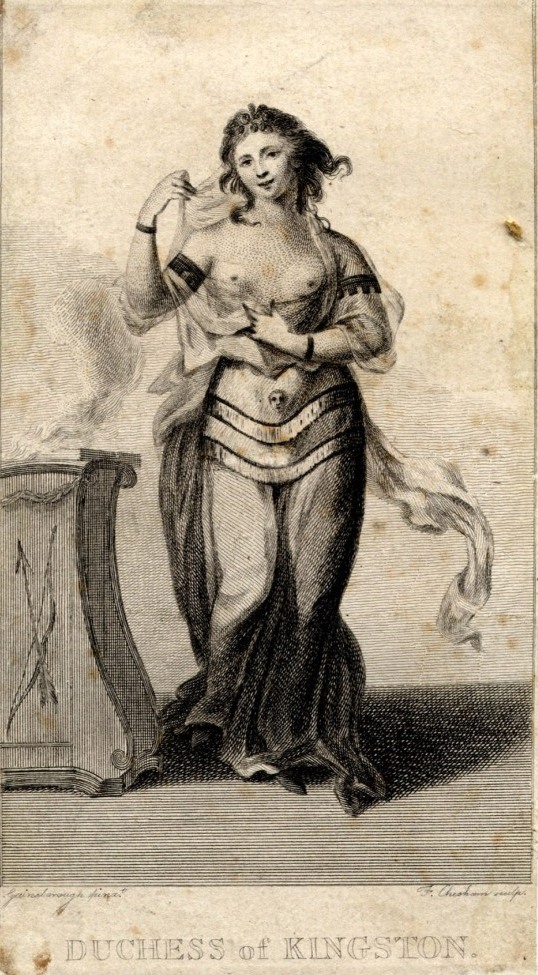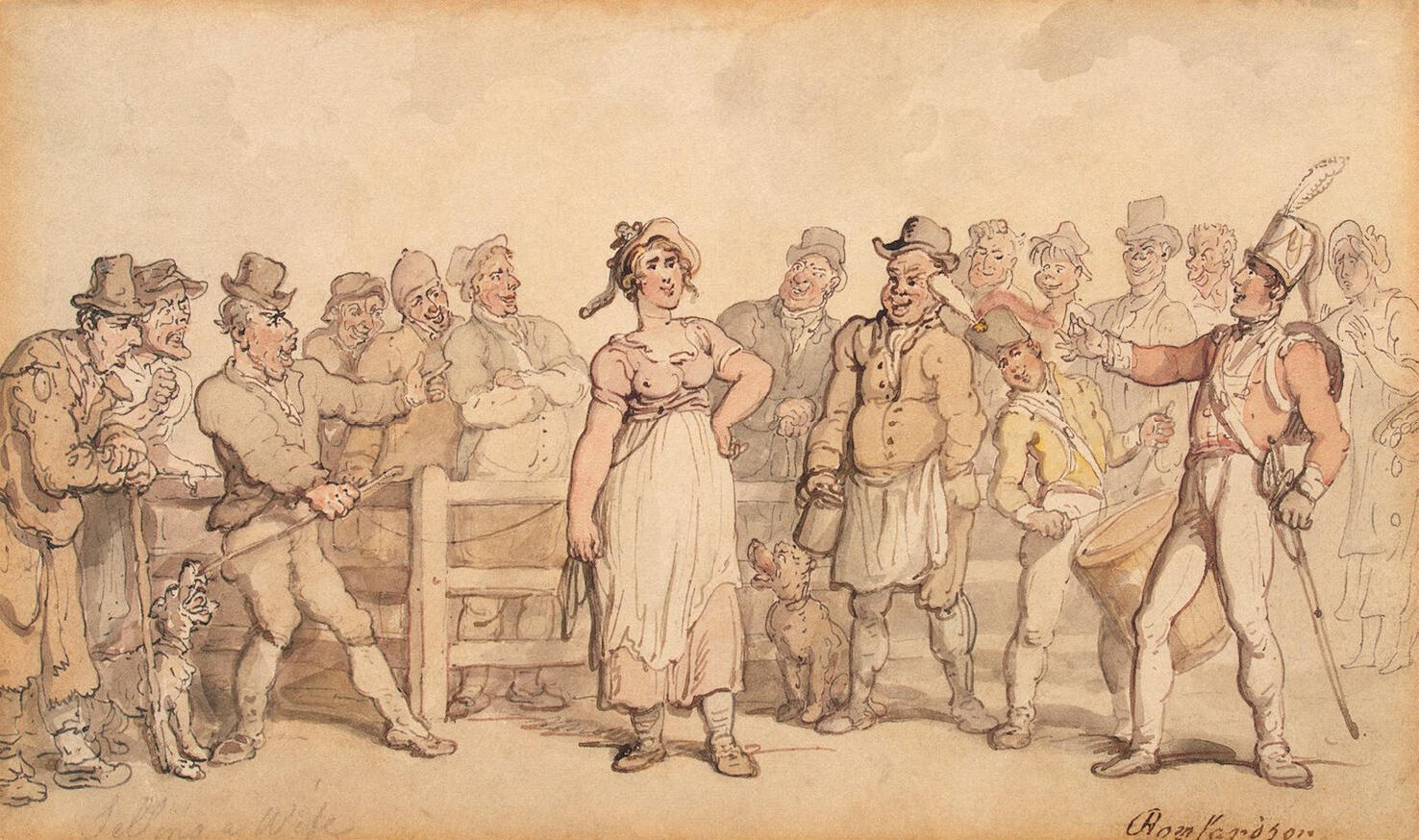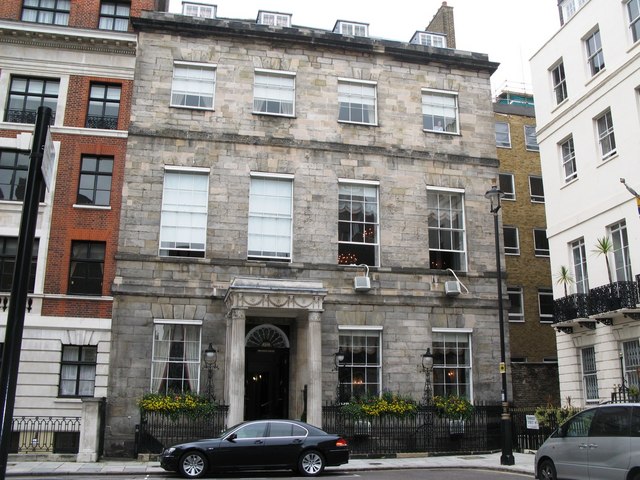|
Henry Brydges, 2nd Duke Of Chandos
Henry Brydges, 2nd Duke of Chandos, KB (17 January 1708 – 28 November 1771), known from 1727 to 1744 by the courtesy title Marquess of Carnarvon, was the second son of the 1st Duke of Chandos and his first wife Mary Lake. He was the Member of Parliament for Hereford from 1727 to 1734, for Steyning between 1734 and 1741, and Bishop's Castle between 1741 and 1744. Career and titles Henry Brydges was born the second son of the Hon. James Brydges, eldest son of the 8th Baron Chandos. He was educated at Westminster School and St John's College, Cambridge. On his father succeeding as 9th Baron Chandos in 1714 (and shortly thereafter being created Earl of Carnarvon), he became The Hon. Henry Brydges, and in 1719, on his father being created Duke of Chandos, he became Lord Henry Brydges. His elder brother died without male issue in 1727, at which point he became heir to the dukedom and acquired the courtesy title Marquess of Carnarvon. From 1729 to 1735 Carnarvon was Master of t ... [...More Info...] [...Related Items...] OR: [Wikipedia] [Google] [Baidu] |
Cannons (house)
Cannons was a stately home in Little Stanmore, Middlesex, England. It was built by James Brydges, 1st Duke of Chandos, between 1713 and 1724 at a cost of £200,000 (equivalent to £ today), replacing an earlier house on the site. Chandos' house was razed in 1747 and its contents dispersed. The name "Cannons" is an obsolete spelling of " canons" and refers to the Augustinian canons of St Bartholomew's Hospital, London, which owned the estate before the English Reformation. Cannons was the focus of the first Duke's artistic patronage – patronage which led to his nickname "The Apollo of the Arts". Brydges filled Cannons with Old Masters and Grand Tour acquisitions, and also appointed Handel as resident house composer from 1717 to 1718. Such was the fame of Cannons that members of the public flocked to visit the estate in great numbers and Alexander Pope was unjustly accused of having represented the house as "Timon's Villa" in his ''Epistle of Taste'' (1731). The Cannons es ... [...More Info...] [...Related Items...] OR: [Wikipedia] [Google] [Baidu] |
1727 British General Election
The 1727 British general election returned members to serve in the House of Commons of the 7th Parliament of Great Britain to be summoned, after the merger of the Parliament of England and the Parliament of Scotland in 1707. The election was triggered by the death of King George I; at the time, it was the convention to hold new elections following the succession of a new monarch. The Tories, led in the House of Commons by William Wyndham, and under the direction of Bolingbroke, who had returned to the country in 1723 after being pardoned for his role in the Jacobite rising of 1715, lost further ground to the Whigs, rendering them ineffectual and largely irrelevant to practical politics. A group known as the Patriot Whigs, led by William Pulteney, who were disenchanted with Walpole's government and believed he was betraying Whig principles, had been formed prior to the election. Bolingbroke and Pulteney had not expected the next election to occur until 1729, and were consequ ... [...More Info...] [...Related Items...] OR: [Wikipedia] [Google] [Baidu] |
James Wallwyn
James is a common English language surname and given name: * James (name), the typically masculine first name James * James (surname), various people with the last name James James or James City may also refer to: People * King James (other), various kings named James * Saint James (other) * James (musician) * James, brother of Jesus Places Canada * James Bay, a large body of water * James, Ontario United Kingdom * James College, a college of the University of York United States * James, Georgia, an unincorporated community * James, Iowa, an unincorporated community * James City, North Carolina * James City County, Virginia ** James City (Virginia Company) ** James City Shire * James City, Pennsylvania * St. James City, Florida Arts, entertainment, and media * ''James'' (2005 film), a Bollywood film * ''James'' (2008 film), an Irish short film * ''James'' (2022 film), an Indian Kannada-language film * James the Red Engine, a character in ''Th ... [...More Info...] [...Related Items...] OR: [Wikipedia] [Google] [Baidu] |
Herbert Rudhale Westfaling
Herbert may refer to: People Individuals * Herbert (musician), a pseudonym of Matthew Herbert Name * Herbert (given name) * Herbert (surname) Places Antarctica * Herbert Mountains, Coats Land * Herbert Sound, Graham Land Australia * Herbert, Northern Territory, a rural locality * Herbert, South Australia. former government town * Division of Herbert, an electoral district in Queensland * Herbert River, a river in Queensland * County of Herbert, a cadastral unit in South Australia Canada * Herbert, Saskatchewan, Canada, a town * Herbert Road, St. Albert, Canada New Zealand * Herbert, New Zealand, a town * Mount Herbert (New Zealand) United States * Herbert, Illinois, an unincorporated community * Herbert, Michigan, a former settlement * Herbert Creek, a stream in South Dakota * Herbert Island, Alaska Arts, entertainment, and media Fictional entities * Herbert (Disney character) * Herbert Pocket (''Great Expectations'' character), Pip's close friend and roommate in ... [...More Info...] [...Related Items...] OR: [Wikipedia] [Google] [Baidu] |
Sir John Major, 1st Baronet
Sir John Major, 1st Baronet (17 May 1698 – 22 February 1781) was a British merchant, Member of Parliament and Sheriff of Sussex. Major was born at Bridlington in the East Riding of Yorkshire, and started in business there, commanding a ship in the Stockholm trade. He apparently abandoned the sea at the age of around 30, but subsequently developed a thriving iron trade becoming eventually the largest dealer in the country. He built up a considerable fortune, acquiring extensive estates in Suffolk and Sussex and other land elsewhere in England, to a value of around £5,000 a year. Nevertheless, he put his shipping interests at the service of the nation when necessary, apparently at considerable cost to himself, providing ships to transport troops in time of war on more than one occasion. In 1724 he married Elizabeth Dale, daughter of another Bridlington merchant, and they had two daughters – Anne, who married John Henniker in 1747, and Elizabeth, who married Henry Brydg ... [...More Info...] [...Related Items...] OR: [Wikipedia] [Google] [Baidu] |
Keith's Chapel
Keith's Chapel, also known as Mr Keith's Chapel and the May Fair Chapel, was a private chapel in Curzon Street, Mayfair, Westminster, operated by the 18th century Church of England clergyman Alexander Keith. Keith had been the first incumbent of the Church of England's new Curzon Chapel, built in Curzon Street in 1730, where he began to perform marriages without either banns or license until he was excommunicated by an ecclesiastical court in 1742.Geraldine Edith Mitton''Mayfair, Belgravia and Bayswater''(2007), p. 28 Keith then went to prison and remained there for several years. However, he quickly established his own private chapel very near to his old one on Curzon Street, where he and his curates continued clandestine marriages until 1754, when the Marriage Act 1753 came into effect. Notable weddings The chapel's weddings included * Duke of Kingston and Elizabeth Chudleigh (bigamously)''National and English Review'', Volume 95 (1930), p. 966 * Henry Brydges, 2nd Duke of ... [...More Info...] [...Related Items...] OR: [Wikipedia] [Google] [Baidu] |
Halter
A halter or headcollar is headgear that is used to lead or tie up livestock and, occasionally, other animals; it fits behind the ears (behind the poll), and around the muzzle. To handle the animal, usually a lead rope is attached. On smaller animals, such as dogs, a leash is attached to the halter. History Halters may be as old as the early domestication of animals, and their history is not as well studied as that of the bridle or hackamore. The word "halter" derives from the Germanic words meaning "that by which anything is held." Uses A halter is used to lead and tie up an animal.Loch, Wayne. "Haltering and Tying Horses." Department of Animal Sciences, University of Missouri Extension. ... [...More Info...] [...Related Items...] OR: [Wikipedia] [Google] [Baidu] |
Wife Selling (English Custom)
Wife selling in England was a way of ending an unsatisfactory marriage that probably began in the late 17th century, when divorce was a practical impossibility for all but the very wealthiest. After parading his wife with a halter around her neck, arm, or waist, a husband would publicly auction her to the highest bidder. Wife selling provides the backdrop for Thomas Hardy's 1886 novel ''The Mayor of Casterbridge'', in which the central character sells his wife at the beginning of the story, an act that haunts him for the rest of his life, and ultimately destroys him. Although the custom had no basis in law and frequently resulted in prosecution, particularly from the mid-19th century onwards, the attitude of the authorities was equivocal. At least one early 19th-century magistrate is on record as stating that he did not believe he had the right to prevent wife sales, and there were cases of local Poor Law Commissioners forcing husbands to sell their wives, rather than having to ... [...More Info...] [...Related Items...] OR: [Wikipedia] [Google] [Baidu] |
Newbury, Berkshire
Newbury is a market town in the county of Berkshire, England, and is home to the administrative headquarters of West Berkshire Council. The town centre around its large market square retains a rare medieval Cloth Hall, an adjoining half timbered granary, and the 15th-century St Nicolas Church, along with 17th- and 18th-century listed buildings. As well as being home to Newbury Racecourse, it is the headquarters of Vodafone and software company Micro Focus International. In the valley of the River Kennet, south of Oxford, north of Winchester, southeast of Swindon and west of Reading. Newbury lies on the edge of the Berkshire Downs; part of the North Wessex Downs Area of outstanding natural beauty, north of the Hampshire-Berkshire county boundary. In the suburban village of Donnington lies the part-ruined Donnington Castle and the surrounding hills are home to some of the country's most famous racehorse training grounds (centred on nearby Lambourn). To the s ... [...More Info...] [...Related Items...] OR: [Wikipedia] [Google] [Baidu] |
Bartholomew Dandridge (artist)
Bartholomew Dandridge (1691 – c. 1754) was an English portrait painter. Life According to Horace Walpole, Dandridge was the son of a house-painter. He studied at Sir Godfrey Kneller's academy of painting and later at the St Martin's Lane Academy. He had a career as a fashionable portrait painter in London for more than forty years, working in a style similar to that of John Vanderbank. In 1732, he was commissioned by Lord Barington to paint a portrait of Frederick, Prince of Wales on horseback. In 1733, he moved to 55, Great Queen Street, which had formed part of the house of Sir Godfrey Kneller until his death two years before. He played a part in the development of the conversation piece, making groups of model figures to judge effects of light and shade. His portraits of the historian Nathaniel Hooke and of Frederick, Prince of Wales are in the collection of the National Portrait Gallery, as is another painting by Dandridge, believed to be of William Kent. The co ... [...More Info...] [...Related Items...] OR: [Wikipedia] [Google] [Baidu] |
James Brydges, 3rd Duke Of Chandos
James Brydges, 3rd Duke of Chandos PC (27 December 1731 – 29 September 1789), styled Viscount Wilton from birth until 1744 and Marquess of Carnarvon from 1744 to 1771, was a British peer and politician. Background Chandos was the only son of Henry Brydges, 2nd Duke of Chandos, and Lady Mary Bruce, daughter of Charles Bruce, 3rd Earl of Ailesbury. He was educated at Westminster School from 1742 to 1749, and then at Göttingen University in 1750/1751. Political career Chandos was Member of Parliament for Winchester from 1754 to 1761 and for Radnorshire between 1761 and 1768.G.E. Cokayne; with Vicary Gibbs, H.A. Doubleday, Geoffrey H. White, Duncan Warrand and Lord Howard de Walden, editors, ''The Complete Peerage of England, Scotland, Ireland, Great Britain and the United Kingdom, Extant, Extinct or Dormant, new ed.'', volume III, page 45 He succeeded in the dukedom upon the death of his father on 28 November 1771. He was a Gentleman of the Bedchamber to George, Pri ... [...More Info...] [...Related Items...] OR: [Wikipedia] [Google] [Baidu] |





